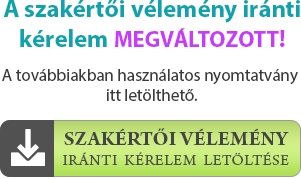Databases: Databases servers is actually treated of the SpinQuest and you will regular snapshots of database posts are stored in addition to the systems and you can papers necessary because of their healing.
Journal Books: SpinQuest spends an electronic digital logbook program SpinQuest ECL that have a databases back-stop managed by the Fermilab It office as well as the SpinQuest collaboration.
Calibration and you can Geometry databases: Running criteria, and also the alarm calibration constants and you may detector geometries, are stored in a database within Fermilab.
Research application source: Study analysis software program is setup for the SpinQuest reconstruction and you may analysis bundle. Contributions into the plan come from multiple supplies, school organizations, Fermilab profiles, off-web site laboratory collaborators, and you may third parties. In your neighborhood created application source password and create files, in addition to contributions out of collaborators is kept in a difference management system, git. Third-group software program is treated by software maintainers underneath the supervision away from the study Working Group. Resource code repositories and addressed alternative party bundles are continually recognized doing the new College or university off Virginia Rivanna stores.
Documentation: Documentation can be obtained on line in the way of blogs https://merkurslots.org/nl/bonus/ often handled from the a content management system (CMS) like a great Wiki during the Github otherwise Confluence pagers or because fixed web sites. The content is copied constantly. Almost every other records on the application is marketed thru wiki users and you can consists of a mixture of html and pdf records.
SpinQuest/E1039 is a fixed-target Drell-Yan experiment using the Main Injector beam at Fermilab, in the NM4 hall. It follows up on the work of the NuSea/E866 and SeaQuest/E906 experiments at Fermilab that sought to measure the d / u ratio on the nucleon as a function of Bjorken-x. By using transversely polarized targets of NH3 and ND3, SpinQuest seeks to measure the Sivers asymmetry of the u and d quarks in the nucleon, a novel measurement aimed at discovering if the light sea quarks contribute to the intrinsic spin of the nucleon via orbital angular momentum.
While much progress has been made over the last several decades in determining the longitudinal structure of the nucleon, both spin-independent and -dependent, features related to the transverse motion of the partons, relative to the collision axis, are far less-well known. There has been increased interest, both theoretical and experimental, in studying such transverse features, described by a number of �Transverse Momentum Dependent parton distribution functions� (TMDs). T of a parton and the spin of its parent, transversely polarized, nucleon. Sivers suggested that an azimuthal asymmetry in the kT distribution of such partons could be the origin of the unexpected, large, transverse, single-spin asymmetries observed in hadron-scattering experiments since the 1970s [FNAL-E704].
Making it maybe not unreasonable to assume the Sivers functions may differ
Non-zero thinking of one’s Sivers asymmetry have been mentioned within the semi-inclusive, deep-inelastic scattering studies (SIDIS) [HERMES, COMPASS, JLAB]. The latest valence right up- and down-quark Siverse services was in fact noticed become equivalent in proportions but having opposite indication. No email address details are available for the sea-quark Sivers qualities.
Among those is the Sivers form [Sivers] and therefore is short for the newest relationship amongst the k
The SpinQuest/E10twenty three9 experiment will measure the sea-quark Sivers function for the first time. By using both polarized proton (NHtwenty-three) and deuteron (ND3) targets, it will be possible to probe this function separately for u and d antiquarks. A predecessor of this experiment, NuSea/E866 demonstrated conclusively that the unpolarized u and d distributions in the nucleon differ [FNAL-E866], explaining the violation of the Gottfried sum rule [NMC]. An added advantage of using the Drell-Yan process is that it is cleaner, compared to the SIDIS process, both theoretically, not relying on phenomenological fragmentation functions, and experimentally, due to the straightforward detection and identification of dimuon pairs. The Sivers function can be extracted by measuring a Sivers asymmetry, due to a term sin?S(1+cos 2 ?) in the cross section, where ?S is the azimuthal angle of the (transverse) target spin and ? is the polar angle of the dimuon pair in the Collins-Soper frame. Measuring the sea-quark Sivers function will allow a test of the sign-change prediction of QCD when compared with future measurements in SIDIS at the EIC.


